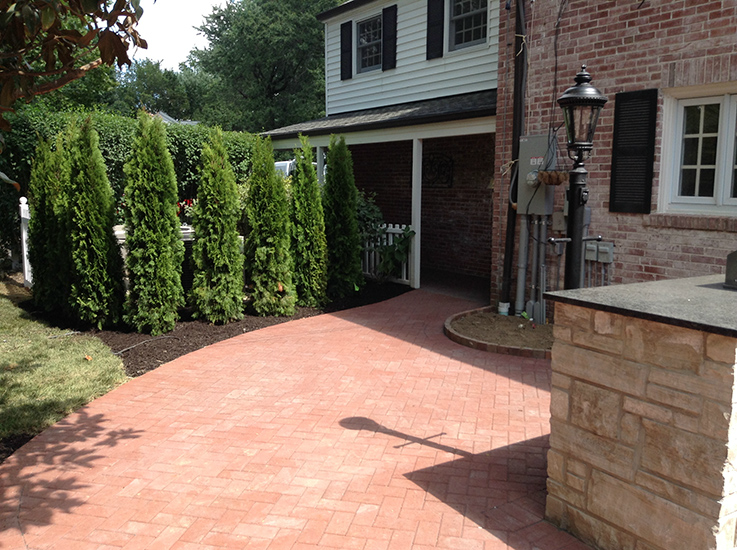
Dec 22, 2020 | custom stonework, hardscape, home appeal, landscape, landscaping, lanscape company, outdoor cleaning, outdoor kitchen, retaining wall, winter kitchen
Whether you enjoy entertaining friends and family during the summer or winter months, or both, having an outdoor kitchen is a great feature to have. It provides a relaxing space to read a book, have conversations with the ones you love, or to just enjoy Mother Nature. However, as winter approaches, you need to make sure your outdoor kitchen is prepared for the colder temperatures. If you do not winterize your outdoor kitchen, expensive repairs might be in your future. The following guidelines will help make sure your outdoor kitchen and appliances will be ready to use when warmer temperatures return.
Take Care of Your Plumbing
Make sure you remove any water that is in the pipes and plumbing system. This can result in major problems, for when it begins to freeze outside, the water can also freeze which can cause the pipes to burst. If the pipes burst, you could end up with huge plumbing bills and flooding, making it unable for you to use your outdoor kitchen.
In order to clear your pipes, you will need to shut off all water supply lines going to the kitchen from the indoor plumbing system. Be sure to shut it off using a valve that is inside your house. This way the water does not rest in outdoor pipes.
When you have shut off the water, start draining the lines. Be sure you do not forget about water supply lines that are connected to refrigerators, ice makers, and sinks. The best way to clear water from lines is by using compressed carbon dioxide.
The last step is to make sure all of the drain valves are left open during winter. This will ensure that water does not remain in the pipes, which will also save you from expensive repairs.
Prepare Your Grill
Even if you plan on using your grill during the winter, it is a good idea to do a deep cleaning to make sure it is in good working condition for the summer. The following steps are a good guideline to follow when cleaning your grill.
- Use a degreaser to get rid of the grease that has built up
- Use a stainless steel polish to polish the grill
- Scrub areas that are still dirty with a metal grill brush
- Remove the grates and clean underneath the grill
- Season the cooking surfaces using vegetable oil to the grates. Heat the grill to 500F for 20 minutes
- If you are not using your grill during the winter, be sure to turn off the gas line
Depending on the quality of your grill and the materials it is made out of, you may not have to use a cover. However, if you do use a cover, make sure you use one that is made for your type of grill that allows moisture to get out.
Cover or Seal if Needed
If you want to prevent wear, cracks, and stains due to cold temperatures and wet weather, then you might want to think about covering your appliances. However, keep in mind that covering surfaces and appliances allows for moisture to get confined under the cover and can cause more damage than if they were not covered. One tip is to call the manufacturer of the appliances to see how to best protect them.
Another way to protect surfaces from wear is to apply sealers and finishers. Make sure you have also taken everything out of cabinets and they are clear of dirt and debris. Use oil on wood cabinets and surfaces and a coat of stainless steel finish on stainless steel appliances. If you have stone countertops, be aware that weather can wear them down over time. You should buy sealers that are made specifically for stone to prevent any damage.
Winterize the Refrigerator and Ice Maker
The first thing you should do is turn the power off to both the refrigerator and ice maker. The water should already be shut off and the water lines running to the machines should be drained. Once you have done these, either unplug the refrigerator and ice maker or turn off their circuits in your home’s electrical panel. Afterwards, clean each one by following these steps:
- Clean out the ice maker’s storage bin and close the drain valve
- Take everything out of the refrigerator and clean it with soap and water
- Remove the front grill of each one and vacuum them out. When done, put the grills back on each one
- Do not cover either one, as this can contribute to a buildup of moisture which can damage the unit
Prepare Your Fire Pit
The first step to get your fire pit ready is to get rid of any debris, ash, and wood that may have gathered in the fire pit during the summer months. If your fire pit is ran by gas, be sure to turn off the supply. You may want to consider covering it with a cover that is weather resistant to keep out snow, leaves, and animals.
By taking the right precautions, you can be sure that your outdoor kitchen will be ready to go when summer comes back around. If you are in the beginning stages of thinking about designing an outdoor kitchen and have questions, please contact Fritz Stonework and Retaining Walls so we can help answer those questions and discuss the many options you can choose from.
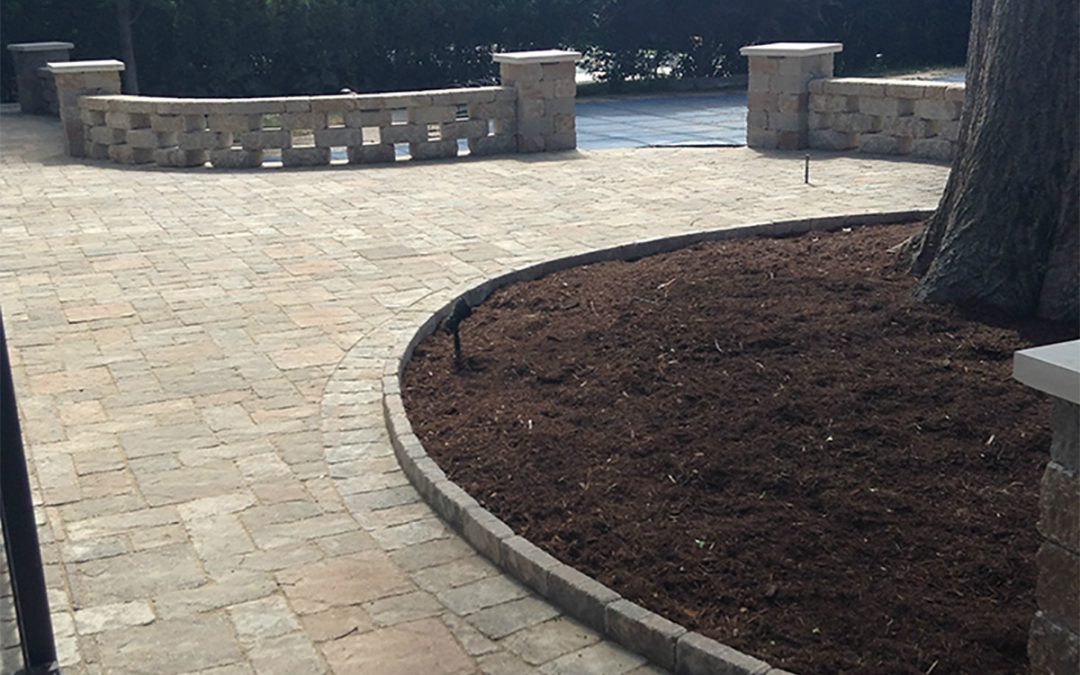
Dec 14, 2020 | custom stonework, hardscape, home appeal, landscape, landscaping, lanscape company, patio pavers, pavers
You may be asking yourself, “What exactly are pavers?” Pavers are a way to add elegance, class, and style to your landscape. They are a natural paving material that is made without using artificial additives. They come in a variety of shapes and colors that have natural characteristics which result in a very aesthetically pleasing sight.
Being able to enjoy your backyard while relaxing in a defined, comfortable space is a priority for many people. It helps relieve stress and tension, it gives you a place to go when you need to take a breather, and it allows you to have some peace and quiet so you can just think about life. There are many ways that you can create this space, such as decks, screened-in porches, and pools. One other way is through patio pavers, which have many benefits for you to consider when deciding how you want to design your outdoor living space.
Benefits
- Pavers decrease the area of your lawn, which means there is less yard maintenance for you to worry about.
- This feature will no doubt add value to your home if you ever decide to sell it. Since pavers are made from a natural clay material from the earth’s surface, they do not lose any of their color or finish, which helps increase the value of your home.
- Patio pavers are commonly known to be one of the most visually pleasing type of outdoor space.
- Pavers come in a variety of stones, colors, sizes, and styles, leaving you with the opportunity to customize your landscape the way you want to. You can choose from a natural slate texture and cobblestone that creates an old-world charm feeling to the classic style of brick.
- It is one of the most durable types of outdoor flooring that will last a long time.
- Pavers are tough and strong, making them resilient to cracking, root growth, frost, erosion, and breaking down from deicing salt.
- If your pavers do become damaged or stained, the necessary repairs are fast, easy, and do not cost a lot. You are able to remove the damaged paver only and replace it the same day. There are no complicated tools required for the replacement and it does not require a huge amount of labor.
- Patio pavers are friendly to the environment because they do not stop the natural flow of water and ground filtering processes. They allow water to drain through and allow the useful bacteria to remove any toxins before they get to any creeks or rivers.
- Pavers create a non-slip, permeable surface which is safer than deck and flooring materials.
- Installation of pavers is fast and can be laid in any type of moderate weather condition. This helps keep the cost, time management, and budgeting issues in check.
- Unlike concrete, you do not have to sit and wait before you can use the pavers. Pavers are ready to use as a driveway or patio as soon as they are set.
Adding pavers can only bring about positive things, including adding beauty to your landscape and joy to you and your family. If you are interested in making pavers a part of your home, give Fritz Stonework and Retaining Walls a call today at (636)-861-1530 so we can help you pick out the style of pavers that best suits your personality.

Nov 25, 2020 | custom stonework, fall outdoors, lanscape company, outdoor cleaning, patio pavers, pavers, retaining wall
Stone structures such as retaining walls and outdoor living spaces are extremely durable, long lasting investments. However, like most things around your house, stonework needs a little bit of maintenance if you want to keep it in the best condition. What you specifically need to watch out for is any degradation to your stonework that could be caused by the changes that Winter and Fall bring. With that in mind, you’ll need to know how to properly protect and clean your stonework as we enter into that season.
Protect Your Stonework by Removing Leaves and Debris
Trees around stonework can create a beautiful effect. However, if leaves, twigs, and branches are left on stone for too long you could find more than just an aesthetic problem come Springtime. If you leave organic matter on stonework, a couple of potential problems can arise. As the leaves begin to decay, mold and mildew form, which can lead to moisture and dirt getting trapped in the mortar or staining the stonework itself. Moisture will work its way into the mortar and won’t be able to escape if heavy amounts of leaves remain on the stonework. The next time a freeze hits, that moisture will expand in the mortar and could lead to structural problems with your stonework patio or retaining wall.
Clean Your Stonework to Ensure That They Last
After you have removed any organic material that might have fallen onto your stonework, it’s time to clean. Cleaning stonework requires time, patience, and proper knowledge of how to do it safely. Improper cleaning can lead to aesthetic and structural problems with your stonework. Following industry guidelines is recommended.
Stonework Cleaning Process:
- First you are going to inspect your stonework for damage. If there is substantial damage to either stonework or mortar, consider calling an expert before attempting a repair or cleaning the area. Improper cleaning of deterioration or cracks can lead to further issues with your stonework. Avoid cleaning structural damage if you aren’t an expert.
- Begin cleaning with water in a small inconspicuous spot. If this cleaning is to your satisfaction continue onto larger areas.
- Only use gentle water pressure when cleaning stone or mortar. Pressure washing can remove mortar easily. Only use a pressure washer on a low setting while constantly moving the nozzle.
- If cleaning with water alone is not enough, you can add a mild detergent to a water mixture. Additionally, use a soft nylon brush to spot clean trouble areas, such as discoloration or encrustation formations.
- If you are still not satisfied with your cleaning progress, there are specific chemicals and abrasive cleaners for stonework available. Please use caution and consider calling an expert if this step becomes necessary.
If you have followed these steps and feel that your stonework could use expert care, look to Fritz Stonework and Retaining Walls. Hiring a professional can save you time and money in the long run. Stonework maintenance is often something homeowners can take care of themselves, but if you ever feel you could be doing more harm than good, it’s time to call Fritz Stonework and Retaining Walls. Call 636-861-1530 for service in the greater St. Louis area or learn more about Fritz Stonework here.
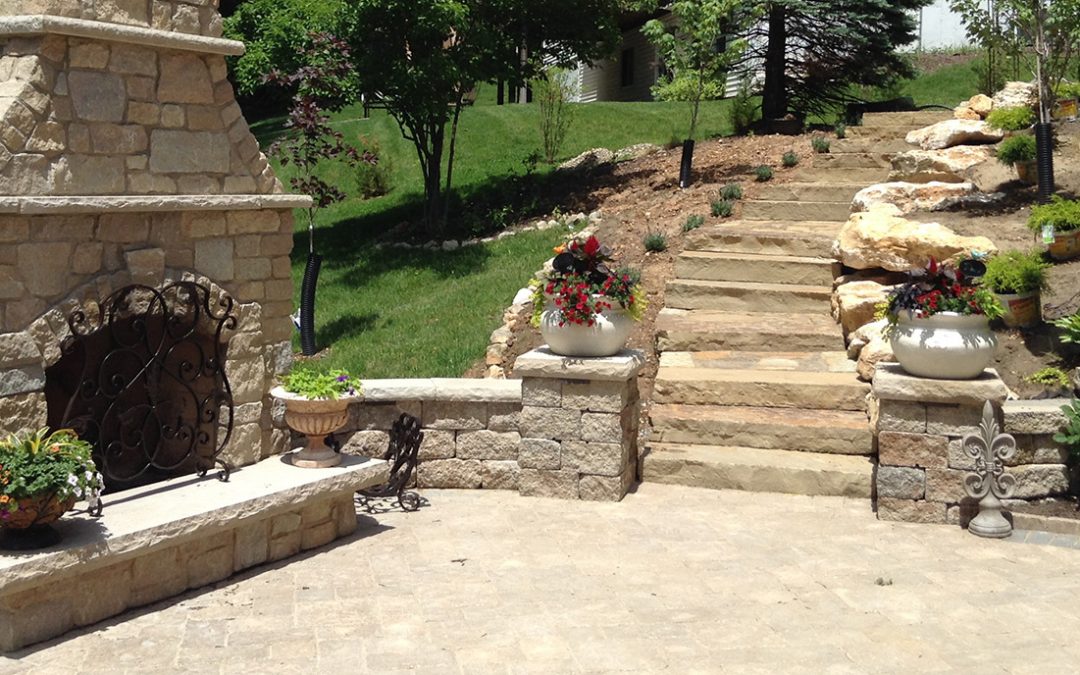
Nov 14, 2020 | custom stonework, fall outdoors, fall patio, fire pit, firepit, hardscape, home appeal, landscape, landscaping, lanscape company, outdoor fireplace
Stonework outdoor spaces have long been held in high esteem for their durability, added value to a home, and, most importantly, the beautiful gathering place it makes for family and friends. During COVID-19, there has been a dramatic rise in home improvements. As people spend more and more time at home, they have seen the need to adapt their homes into more than just a living space. A home can be a destination in itself. A place to entertain family and friends without the need for going to a restaurant or a bar. Stonework such as patios, walkways, and fire pits can give your home that extra touch that makes your family and friends feel as though they are visiting a destination rather than someone’s home.
Why Should I Choose Stonework for My Outdoor Space?
Stonework is long lasting and has a timeless appeal to it. Where wood degrades and styles change, stonework will endure and have lasting appeal long past current trends. Here are four reasons why stonework is the best choice for updating your outdoor living space.
- Low Maintenance: There’s very little maintenance to be done with stonework patios, walkways, and fire pits. If installed correctly, stonework not only last for decades, it will look good for decades. Stonework keeps its appearance throughout the years with basic maintenance that most homeowners can accomplish. Simply keep leaves, twigs, branches, and other organic material from accumulating on your stonework. Keeping organic material from decaying on your stonework prevents any discoloring on the stones and prevents moisture from entering into the mortar.
- Weatherproof: Stonework performs well in any season and looks the same all year. Where wooden deck will expand and contract with the seasons, stonework does not move seasonally. Where ground contact will eventually rot even pressure-treated lumber, stonework will not rot. A stonework patio will also never get blown away in a tornado or in strong winds like a wooden deck can. The weight of stonework, and it being flush into the ground, prevents wind from ever uprooting your investment.
- Design: Stonework comes in a variety of styles and colors. Expert stonework installers can help you decide on a design that fits your home and needs. Merging stonework pathways, patios, and fireplaces can seem like an impossible task to a homeowner, but experienced professionals can help bring your dream backyard alive.
- Adds Value to Your Home: Stonework is one of those few investments that you can make to your home that will age gracefully. The material itself is permanent and the aesthetic of stonework never goes out of style. If you ever decide to sell your home, buyers will pay more for a home that has a stonework outdoor space. Stonework won’t be a liability if you go to sell your home like a decaying and dilapidated wooden deck would be. But the “value” of an outdoor space doesn’t have to be solely in its resale value. If you decide not to sell your home, you still have the value of an outdoor space that you, your friends, and your family can benefit from. You might find yourself spending more time outside enjoying the fresh air and the people important to you.
COVID-19 isn’t stopping others from getting the most out of life at home. In a season where home improvement is on the rise, make your home improvement one that lasts. Choosing stonework for your patio, walkway, or fire pit is an improvement that you won’t come to regret. Choosing trusted professionals in the industry is just as important as making the right choice in your home improvement options. Serving the greater St. Louis region for over 30 years, Fritz Stonework and Retaining Walls is the best choice if you’re considering updating your outdoor space. Call Fritz Stonework at 636-861-1530 or learn more about Fritz Stonework here.
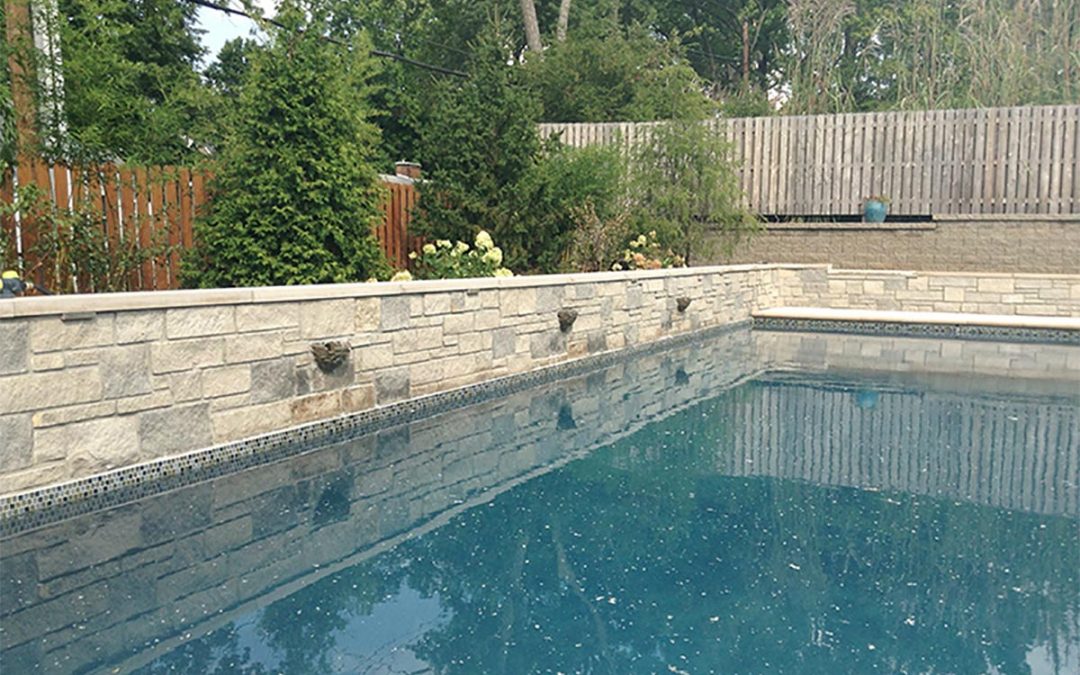
Oct 25, 2020 | landscape, landscaping, lanscape company, natural landscape, retaining wall
When it comes to landscaping, what comes to mind? Do you think of a beautiful garden full of bushes, flowers, concrete statues, and a small coy pond? All of those are great ideas to make your home look appealing. However, did you ever think about retaining walls? That’s probably the last thing you would ever think about, but they are a very important part of your garden. Retaining walls help keep your garden looking gorgeous by providing strength, preventing erosion, controlling rainwater runoff, and creating terraced levels for your garden beds.
Retaining walls can also make your property look effortlessly stylish no matter what style you choose. Therefore, it is a good thing there are so many options to choose from that can fit your budget and taste!
Concrete Retaining Walls
- White concrete creates a classic look and can make your green grass stand out. It is a simple choice but it is also elegant and would look great with a color scheme of neutrals, blues, and greens.
- Smooth concrete is a more modern choice and will give your home the edge you are looking for. It also creates a blank canvas so you can add as much greenery or flowers that you would like to, making your own garden sanctuary.
- Shotcrete rock face is simply used to describe sprayed concrete. Shotcrete rock face come in a multitude of colors ranging from standard grey to warm sandstone or clay colors that create a natural rock look.
- Concrete blocks is a bold choice when you need a strong solution. Concrete blocks prevent erosion on large properties; however, this can look unsightly so include levels and greenery to prevent this from happening.
Stone Retaining Walls
- Cut stone provides you with the opportunity to incorporate different types of stones to suit your taste. They are also last a long time so you do not have to worry about updating often.
- Round rocks add texture and shapes to your garden or backyard. They provide support to your steps, garden beds, and other features around your house.
- Sandstone is a good choice if you are wanting a more formal retaining wall. This is a classic choice that is not only practical but also serves as a feature piece wherever you use it.
- Grey blocks are a practical solution and can make a lasting impression. Use grey stone blocks to create steps leading up to your front door and you’ll create an impressive sight.
- Large blocks create a bold statement by using large, rough unstructured rocks. This natural look will easily blend in with your outdoor environment.
- Stone veneer is a great choice when you are on a budget and looking to create something more luxurious. This type of retaining wall uses stone placed over the top of other foundational materials such as brick.
Timber Retaining Walls
- Timber gives a nice, sleek look; however, if you’re looking for longevity then it might not be the choice for you. Naturally durable types of hardwood timber include tallow wood, ironbark, grey gum and forest red gum. These types of hardwood timber are naturally resistant to termites and can last up to 25 years.
- Timber sleepers are a rustic type of retaining wall. You will want to use older pieces of timber that has been treated or timber that has been stained or sanded to add character. It is a great choice for any home but especially for a country-style home.
Brick Retaining Walls
- White brick allows for you to add a little detail but still keep your color palette simple yet tasteful.
- Red brick is a classic choice and when adding white grout, you really make the bricks stand out. This will look great in any area of your home and can easily be complimented with greenery for a remarkable look.
Retaining walls play an important part in the landscape of your yard. There are many options to choose from and it can become overwhelming. Let the experts at Fritz Stonework & Retaining Walls help you decide which option is best for you and which one suits your style. Call us today to learn more about our retaining wall services and how we can help you.
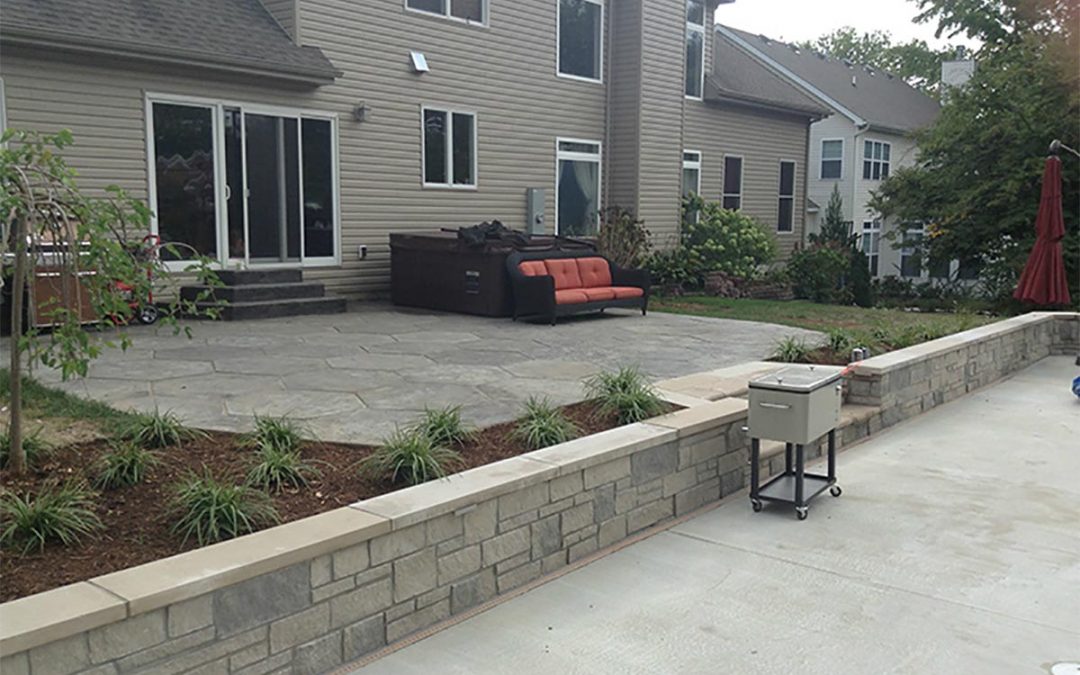
Oct 14, 2020 | fall outdoors, fall patio, fire pit, firepit, fireplace, hardscape, home appeal, landscape, landscaping, lanscape company, masonry, outdoor fireplace, patio
For some people, the fall and winter seasons are a nice welcoming change to the hot summer temperatures. However, what comes along with fall and winter is weather that includes moisture, such as rain and snow. For as long as structures have been in existence, moisture has been the main cause for its deterioration. Moisture in all forms affect how well the building materials function.
The way masonry systems are designed should prevent the intrusion of moisture into the building’s interior. It should also keep the building’s structural components safe. If there is any structural break, then your building could be compromised. Masonry units that are made poorly are among the most common failure points. These include mortar joints, hairline cracks, parapet, and door and window details. Water can also come through by vapor condensation and can enter the structure as a result of poor work. The lack of proper drainage can exacerbate the impact of any type of moisture that makes its way through; therefore, creating major damage to the building.
Structural Problems
When unwelcome moisture seeps through, masonry units and mortar can crack. Thermal expansion can be a result when water gets into brick, concrete, and natural stone. Thermal expansion can cause the surface to peel, pop out, or flake off. This is also known as spalling, which is caused by too much moisture in the masonry that puts pressure outward. Spalling can ultimately result in large sections of the masonry to crumble and fall off, which will lead to structural damage.
Too much moisture cam also result in the wall rotting, which is very unaesthetic and an unhealthy condition. The insulation can also disintegrate along with staining of the interior finishes. Other effects may include the deterioration and/or corrosion of the wood/steel backup studs, cladding, ties and reinforcements. If this is left unattended to, the excess water can cause an increase and spread of additional structural degradation and complete structural failure.
Aesthetic Degradation
When there is excess moisture seeping through the masonry, efflorescence is a main problem. Efflorescence is a white, powdery, crystalline deposit that forms on the surfaces of masonry, stucco, and concrete. Efflorescence is caused when salt within the masonry unit itself has been dissolved due to too much moisture and has made its way to the surface of a porous material. It then forms the white, powdery, crystalline deposit as the water evaporates.
In order for efflorescence to happen, three problems must be present.
- There has to be water-soluble salts somewhere in the wall
- There must be enough moisture in the wall to render the salts into a soluble solution
- There must be a way for the soluble salts to move their way through to the surface so the moisture can evaporate, getting rid of the salts so they can crystallize causing efflorescence
Just because sulfates may be present in a masonry wall, it does not mean efflorescence will occur. The sulfates must be dissolved by water in order for it to happy. If there is no moisture then the sulfates will not find their way to the surface. However, there are certain conditions that will aggravate the possible creation of efflorescence. For example, if a block is exposed to cold, rainy weather during storage or if the structure has been poorly designed in regards to drainage and moisture control, then efflorescence is more likely to occur.
Health and Safety
Too much moisture can cause bacteria to grow which can create new odors or worsen current ones. The effects of growing bacteria can cause existing conditions to become worse, such as asthma and allergies. These bacteria have also been known to cause cancer and birth defects.
Managing moisture is a top priority when designing and building, especially here at Fritz Stonework & Retaining Walls. It is important to us that you and your family are safe from any potential harm. We work hard to make sure your masonry is up-to-par and lasts for many years to come. Contact us to today at (631) 861-1530 so we can help you create your masterpiece.






